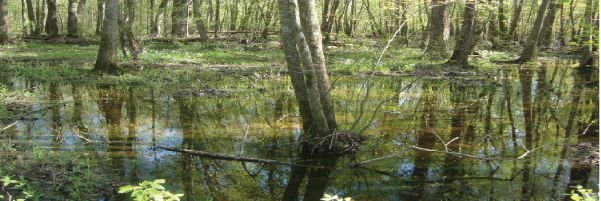
Understanding Wetland Delineations and Wetland Permitting
Wetlands are vital ecosystems that provide essential environmental benefits, including water filtration, flood mitigation, and natural habitat for wildlife. Land development and industrial projects can significantly impact these sensitive areas. To ensure proper protection and management, environmental regulations require companies to assess and mitigate potential impacts on wetlands and waterways.
This guide explains the wetland delineation process, the importance of wetland impact permitting. Each step plays a critical role in preserving natural resources and maintaining regulatory compliance.
What Is Wetland Delineation?
Wetland delineation is the process of identifying and mapping wetland resource areas on a specific site. Its purpose is to establish accurate wetland boundaries and determine the regulatory status of those areas under environmental laws. In the United States, wetlands are protected under federal and state regulations, including the Clean Water Act (CWA), which is enforced by the U.S. Army Corps of Engineers (USACE) and state agencies.
Wetland delineation relies on fieldwork, scientific analysis, and regulatory standards to identify three key characteristics:
1. Hydrology
Even if they are not currently covered with water during the site visit, there is usually evidence of wetlands, such as past flooding, ponding, or saturated soils, indicating that the area is regularly affected by water.
2. Hydric Soils
Hydric soils are saturated or flooded long enough to create anaerobic conditions, a key indicator of wetland presence.
3. Vegetation
Wetlands support hydrophytic vegetation, plants capable of growing in environments with persistent moisture or saturated soil conditions.
Once delineation is complete, wetland areas are surveyed, mapped, and documented. Results are submitted to regulatory agencies such as the USACE or state environmental authorities for verification.
Why Is Wetland Delineation Important?
Wetland delineation determines which areas are protected under environmental regulations. Wetlands provide essential ecosystem services, including:
Water Filtration
Wetlands naturally filter pollutants and excess nutrients before they reach rivers, lakes, and other water bodies.
Flood Control
By storing excess rainwater and runoff, wetlands reduce downstream flooding risks.
Wildlife Habitat
Wetlands support numerous plant and animal species, including threatened or endangered species.
Accurate wetland delineation helps businesses avoid inadvertently disturbing protected areas and ensures compliance with environmental regulations by clearly defining the limits of jurisdictional waters. It also supports efficient project planning by establishing boundaries upfront, reducing costly redesigns and aids property buyers in making informed decisions before acquisition.
Wetland Impact Permitting: What Is Required?
After wetland delineation, the next step is determining how a proposed project may impact wetlands. Wetland impact permitting is required when activities such as construction, dredging, or filling could alter or disturb wetland areas.
Under Section 404 of the Clean Water Act, the U.S. Army Corps of Engineers regulates permits for the discharge of dredged or fill material into waters of the United States, including wetlands. State and local agencies may require additional permits.
Key steps in the wetland impact permitting process include:
1. Project Description and Purpose
A detailed summary of the proposed work and its potential impacts on wetlands, explaining how these effects relate to the overall project goals and purpose.
2. Alternatives Analysis
Regulatory agencies require evaluation of project alternatives to minimize wetland disturbance.
3. Mitigation Plan
If impacts are unavoidable, a mitigation plan is required. This may involve restoring or enhancing wetlands or purchasing mitigation through an approved mitigation bank.
4. Public Review and Comment
Stakeholders, including local agencies, the general public, and environmental groups, may provide feedback on the project.
5. Permit Issuance
Once the review, mitigation planning, and regulatory requirements are satisfied, the permit is issued.
